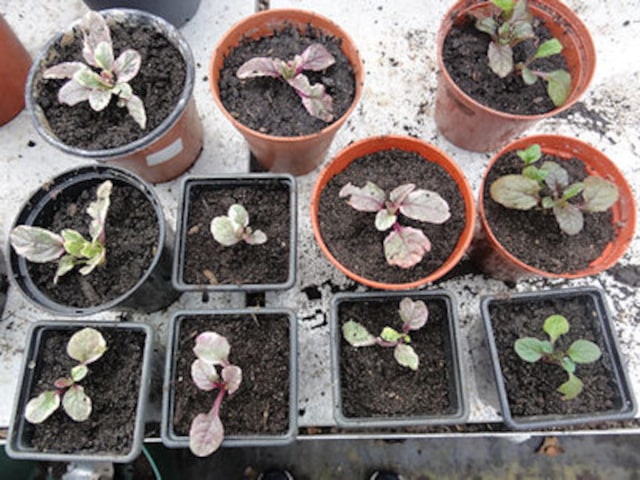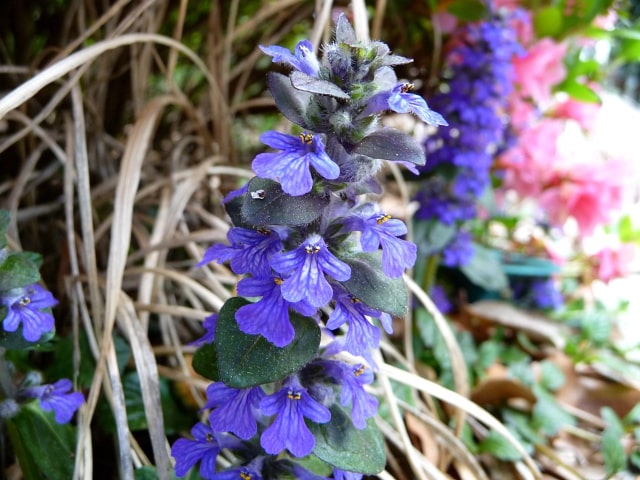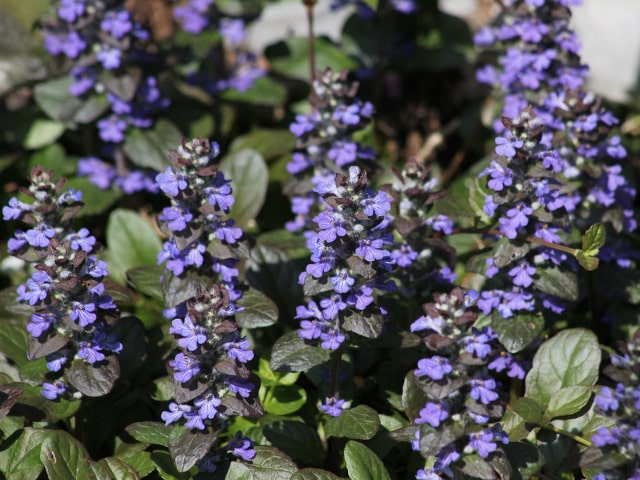
Ajuga plants are small but very durable and tough. They make a fantastic groundcover for your garden. Another good thing about Ajuga plants is that they can control erosion on a hill or a bank. They always come in handy if there is a patchy spot on your lawn that you cannot fill. Ajuga plants are also great for adding some color to your garden. You may also grow them under shrubs and trees.
Reasons to Grow Ajuga Plants
Ajuga plants are great for carpeting a shady spot or any area where the grass won't grow. Ajuga plants are tough so they can survive where other plants can't. A great thing about them is that they provide some beautiful blooms during the spring and summer.
Another great thing about these plants is that they will stay attractive almost all year round. They hold their leaf color and provide you with nice blooms in spring and summer.
Ajuga plants (scientific name Ajuga reptans) is a beautiful perennial that can thrive in U.S. hardiness zones 3 to 9. It is considered and evergreen plant that is known for its glossy leaves. They can grow in the sun or partial shade, so you have various options. However, keep in mind that the foliage will develop the best colors in full son.
Ajugas naturalize very easily, by spreading stolons. These are horizontal stems that grow along the ground. It means that these plants spread easily, so make sure to think about where to plant Ajugas. These plants can become invasive if you don't choose the right spot. For example, avoid planting them too close to lawns, flower beds or any other areas where you don't want Ajugas to grow.
Planting Ajugas
It is important to wait until all the risk of the frost has passed before you plant your Ajugas in the garden. Once it is warm enough, simply dig holes that are deep enough for Ajuga root balls. Make sure to space the holes 8 to 15 inches apart.
Before planting, carefully loosen the plants' roots. After this, gently place the plant in the ground. Firm the soil around the plants. Make sure to water thoroughly to help settling the plants. This will also eliminate any potential air pockets.
Care Tips
Here are some basic care tips for Ajuga plants:
- Ajugas rarely need fertilizing so you don't need to worry about it.
- A great thing about Ajuga plants is that they can grow in almost any kind of soil. However, keep in mind that they prefer a moist place that can drain easily. At the same time, Ajuga plants can withstand shorter periods of drought.
- Ajuga plants generally grow and even spread on their own so there is no much care you need to provide to make them thrive.
- One thing to keep in mind is that you will probably need to thin your Ajuga plants from time to time. It is best to do every two or three years. Thinning will preventing Ajugas from becoming overcrowded.
- You may want to divide your established clumps in the fall or early spring. This is also the time to replant your Ajugas if you wish so.
- Ajuga plants are strong so they are resistant to animals such as rabbits and deer.
- You don't have to prune them but you can mow over them with a mower on a high setting if you want to make them look neater after the flowering season.
- Be prepared that patches of Ajuga plants might die from time to time. In case this happens, make sure to remove all dead foliage but keep the roots in the ground. It is not unusual for plants to come back in the next year.
- Ajuga plants tend to be healthy but crown rot can be a problem. This is particularly common in heavy soils or in hot, humid areas. You will know that this is happening if you notice signs of rot in the lower leaves. The plant will also develop spots on the crowns. In order to prevent this disease, make sure to provide your Ajuga plants with good air circulation. Avoid over-fertilizing. Keep in mind that there is no treatment for crown rot so you will need to remove and destroy all of the affected plants. In case you want to replant Ajugas on the same spot, make sure to try a different kind of ground cover in order to decrease the chance of another crown rot.
Photo credit: j_arlecchino




1 Comments
I have several plantings of Ajuga in different locations of the yard. I notice that the leaves are getting smaller, is this normal?